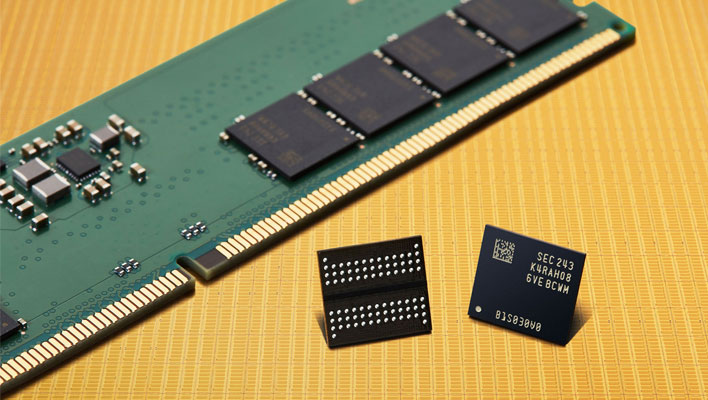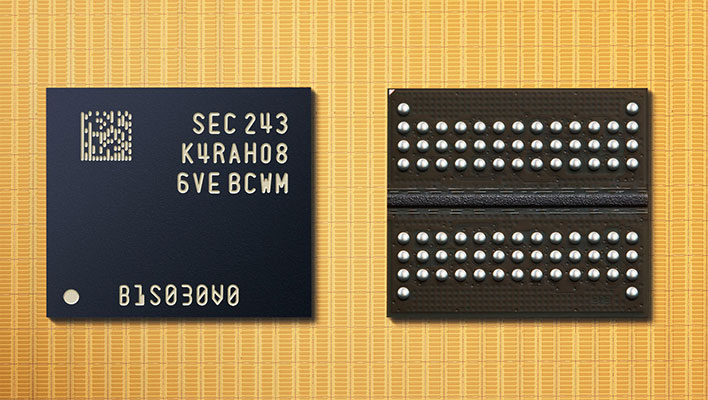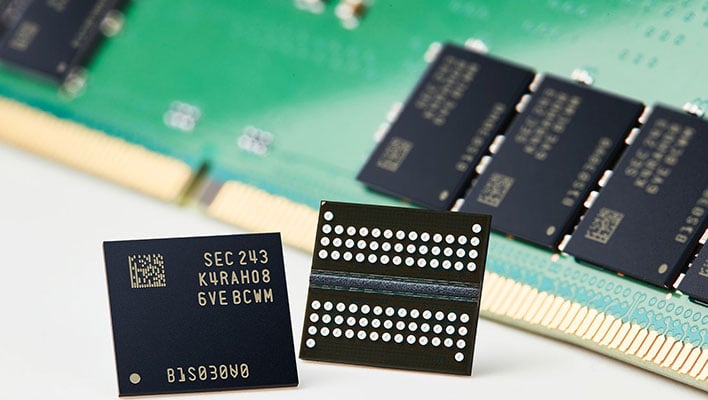Samsung Develops First 12nm DDR5 Chips Paving The Way For Faster And Cheaper RAM

For some users, one of the roadblocks of building a PC around the latest generation platforms from AMD or Intel is the comparatively high cost of DDR5 memory (which is optional but preferred with Raptor Lake, and required for Zen 4). Well, that could soon change. Samsung is touting the development of the industry's first 12-nanometer class DDR5 DRAM, alluding to cheaper memory solutions coming around the bend.
"Our 12nm-range DRAM will be a key enabler in driving market-wide adoption of DDR5 DRAM," said Jooyoung Lee, Executive Vice President of DRAM Product & Technology at Samsung Electronics. "With exceptional performance and power efficiency, we expect our new DRAM to serve as the foundation for more sustainable operations in areas such as next-generation computing, data centers and AI-driven systems."

Market-wide adoption is another way of saying mainstream adoption, and that can only happen if the bang-for-buck proposition improves. And it will, as always eventually happens when the industry shifts to a new standard (in this case, going from DDR4 to DDR5). This has already happened to some extent, with improvements to both availability and retail pricing for DDR5 memory kits.
Samsung also ensures that this development isn't necessarily code for slow RAM. Just the opposite, the company says its 12nm chips will make it easier for memory makers to offer speeds of up to 7.2 gigabits per second (Gbps). The market is already at that point, and there are even DDR5-7600 and DDR5-7800 memory kits, but they typically cost between $300 (DDR5-7200) and $400 (DDR5-7800) for 32GB.
Interestingly, Samsung and AMD made a point to say the two companies collaborated on the development of 12nm DDR5 chips, and specifically for the Zen architecture.
"Innovation often requires close collaboration with industry partners to push the bounds of technology," said Joe Macri, Senior VP, Corporate Fellow and Client, Compute and Graphics CTO at AMD. "We are thrilled to once again collaborate with Samsung, particularly on introducing DDR5 memory products that are optimized and validated on ‘Zen’ platforms."

Samsung said it achieved the "technological leap" to 12nm by employing a new high-k material to increase cell capacitance, and a proprietary design technology to improve circuit characteristics.
"Combined with advanced, multi-layer extreme ultraviolet (EUV) lithography, the new DRAM features the industry’s highest die density, which enables a 20 percent gain in wafer productivity," Samsung says.
The cherry on top is better power efficiency. According to Samsung, it's 12nm DDR5 DRAM chips consume up to 23 percent power than the previous-generation DRAM. All of this will comet together in the following months, with mass production on track to begin in 2023.

